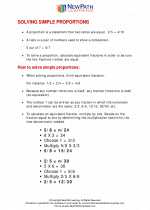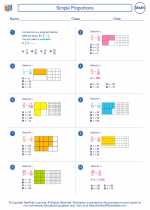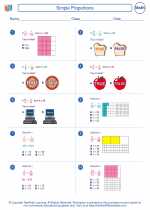Diamond in Mathematics
Definition
In mathematics, a diamond is a shape that is formed by connecting four points on the coordinate plane to create a parallelogram. The diamond is essentially a special type of parallelogram, where all sides are of equal length and the angles are not right angles.
Properties
Some key properties of a diamond include:
- Equal Side Lengths: In a diamond, all sides are of equal length.
- Opposite Angles: The opposite angles of a diamond are equal in measure.
- Diagonals: The diagonals of a diamond bisect each other at right angles and are of equal length.
Formulas
There are a few important formulas related to diamonds:
- Perimeter: The perimeter of a diamond can be calculated using the formula: Perimeter = 4 * side length
- Area: The area of a diamond can be calculated using the formula: Area = (diagonal 1 * diagonal 2) / 2
Example Problems
Let's work through a couple of example problems to illustrate the concepts:
Problem 1
If the side length of a diamond is 6 cm, what is its perimeter?
Perimeter = 4 * 6 = 24 cm
Problem 2
If the diagonals of a diamond are 10 cm and 8 cm, what is its area?
Area = (10 * 8) / 2 = 40 square cm
Real-World Applications
Diamonds and other parallelograms are commonly encountered in various real-world situations, such as in architecture, engineering, and design. Understanding the properties and formulas related to diamonds can be useful in these fields.
[Diamond] Related Worksheets and Study Guides:
.◂Math Worksheets and Study Guides Sixth Grade. Simple Proportions

 Worksheet/Answer key
Worksheet/Answer key
 Worksheet/Answer key
Worksheet/Answer key
 Worksheet/Answer key
Worksheet/Answer key
